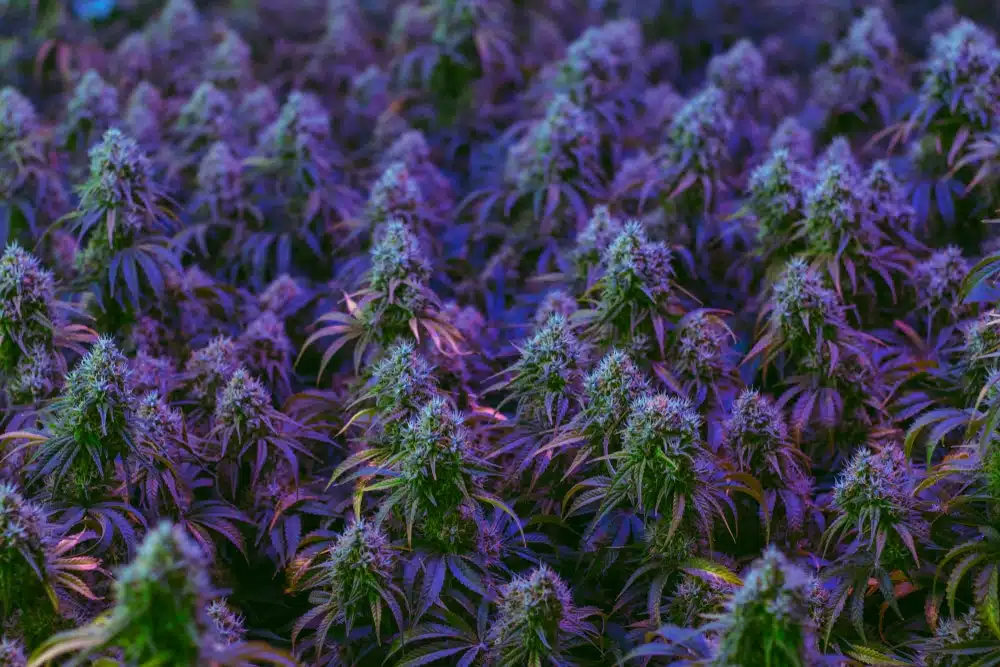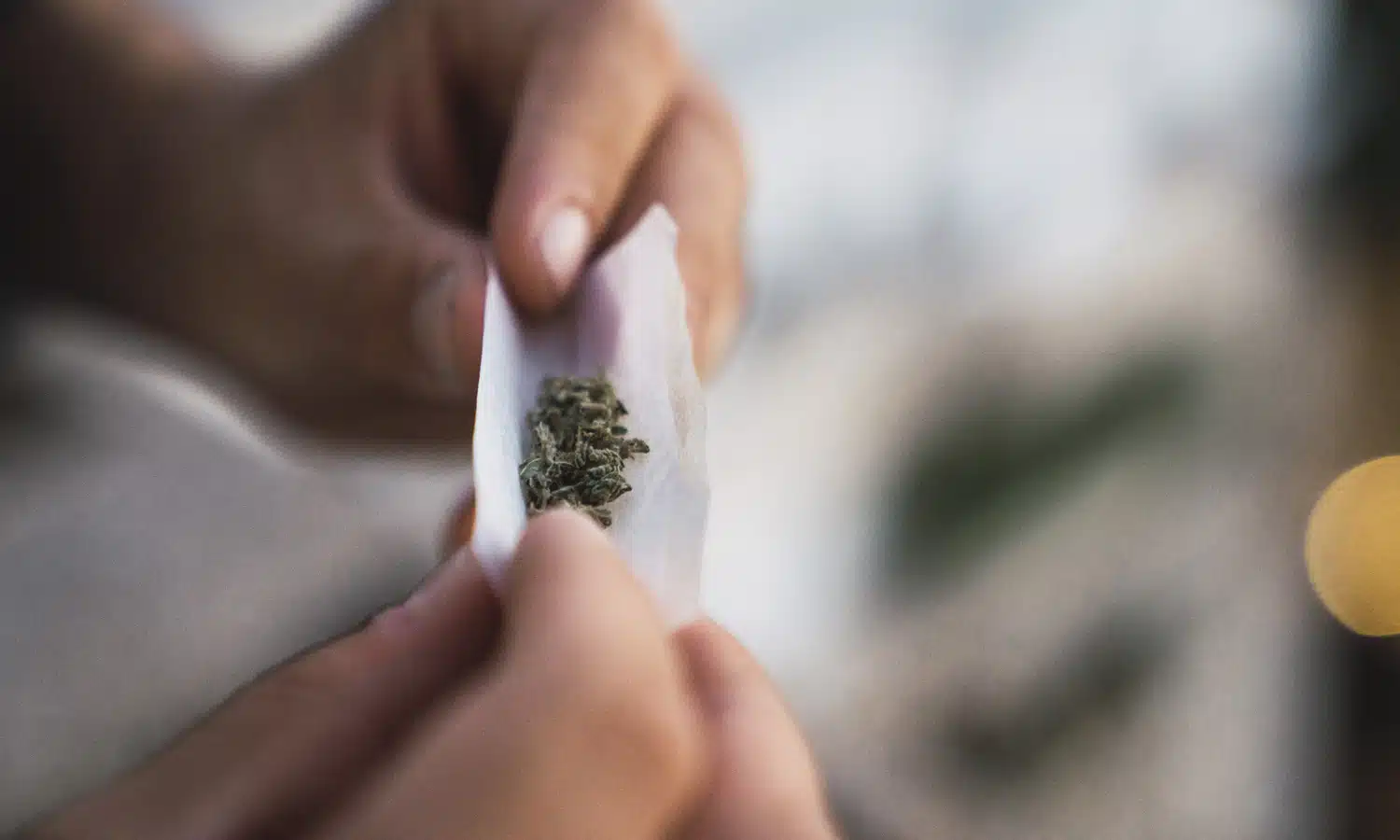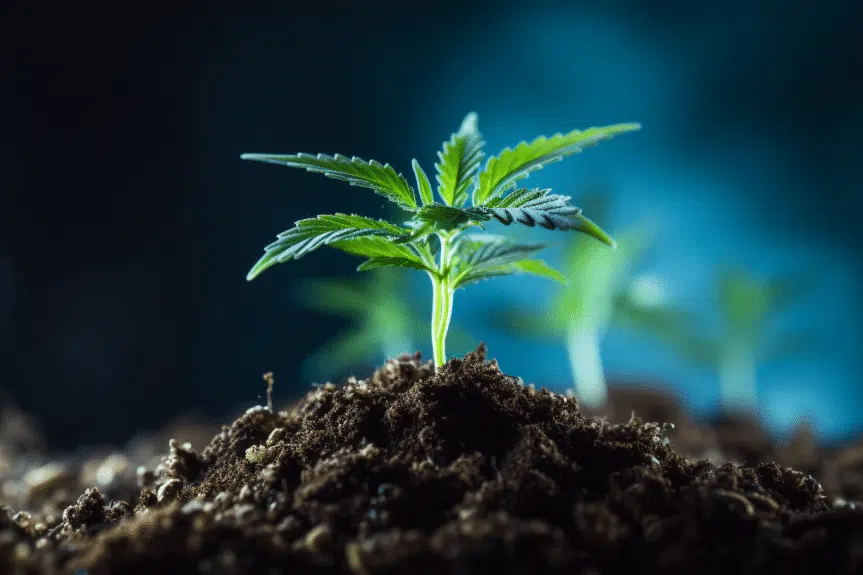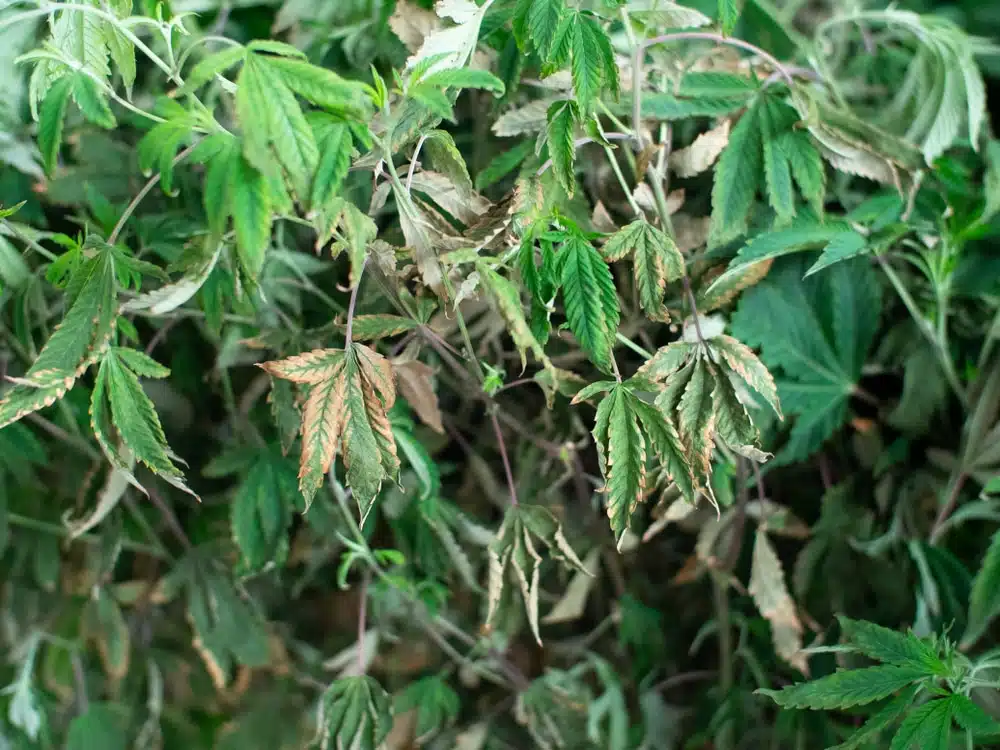How to Grow Purple Weed: The Ultimate Guide to Techniques, Tips, and Strains
Do you know how to grow purple weed? If not, you’re in the right place.
Raising purple plants is a fun and rewarding experience for any enthusiast. Not only does it add a unique visual element to your garden, but it also boosts bud flavor and potency. Learn the right techniques, and you can achieve those beautiful hues without prior experience.
Join us to discover how to make weed purple. We discuss the science behind this hue and provide detailed instructions on achieving it at home.
Let’s hop into it.
Understanding purple weed
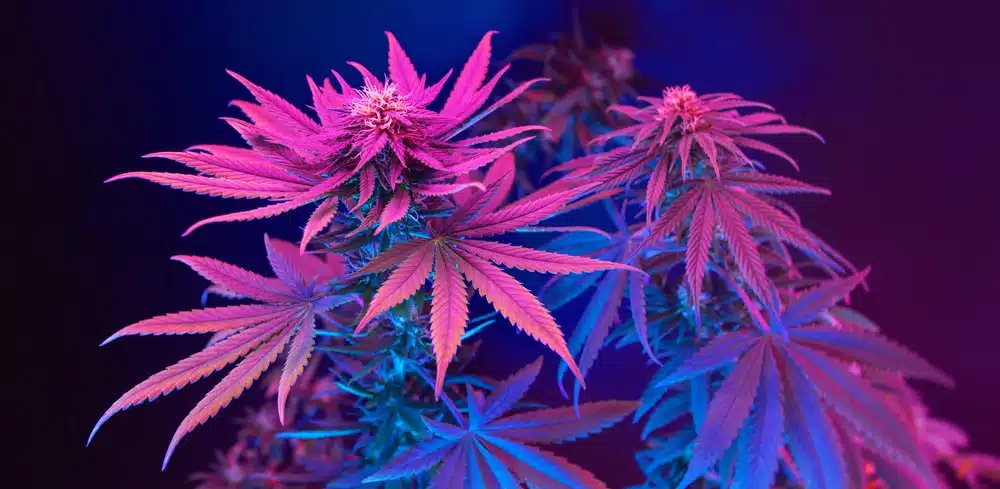
- Purple weed plants growing indoors
Learning how to make weed grow purple requires understanding the reasons behind this coloration. It’s an interplay between nature and nurture.
What causes the purple coloration?
Purple weed starts with genetics. Some strains are more likely to develop these hues because of their chemical makeup. Environmental factors like temperature, nutrients, and exposure to light then determine whether they shine through.
By manipulating the environment, growers can coax genetically predisposed plants into developing violet hues. That’s where the art of nurture for growing purple weed enters the picture.
The role of anthocyanins in cannabis plants
Anthocyanins are plant pigments responsible for purple, red, and blue coloration in cannabis leaves, stems, and buds. While most strains have green chlorophyll as a primary pigment, anthocyanins become dominant under certain conditions.
Anthocyanins have a developmental role in plants. They protect the foliage from UV damage and environmental stressors, increasing their overall health and resilience.
From a visual standpoint, anthocyanin expression can make plants develop a unique coloration. This chemical may also have various health benefits, making your weed good for you!
Popular purple weed strains
Picking strains with a propensity towards a purple coloration makes it easier to achieve this hue in your garden. Here are some of our favorites:
- Grape Drink is an indica-dominant hybrid with a candy flavor and well-rounded effects. Its leaves take on a vibrant hue as the plants age.
- Purple Berry is a relaxing indica that offers gentle lavender-scented sweetness. Its reddish pistils sit against a stunning pink base, surrounded by violet sugar leaves.
- Ayahuasca Purple is a pure indica with lavender, mango, and nutty flavors. Its dense buds, purple coloration, and heaps of trichomes amount to incredible bag appeal.
- Lethal Purple is a tasty hybrid with balanced genetics. If you like pink and purple pistils on weed, this is the top strain for you.
- Rip City Purps is indica-dominant, sweet-and-spicy, and heavy-hitting. The plants are pale violet and shimmer with crystals as harvest time approaches.
The growing environment for purple weed
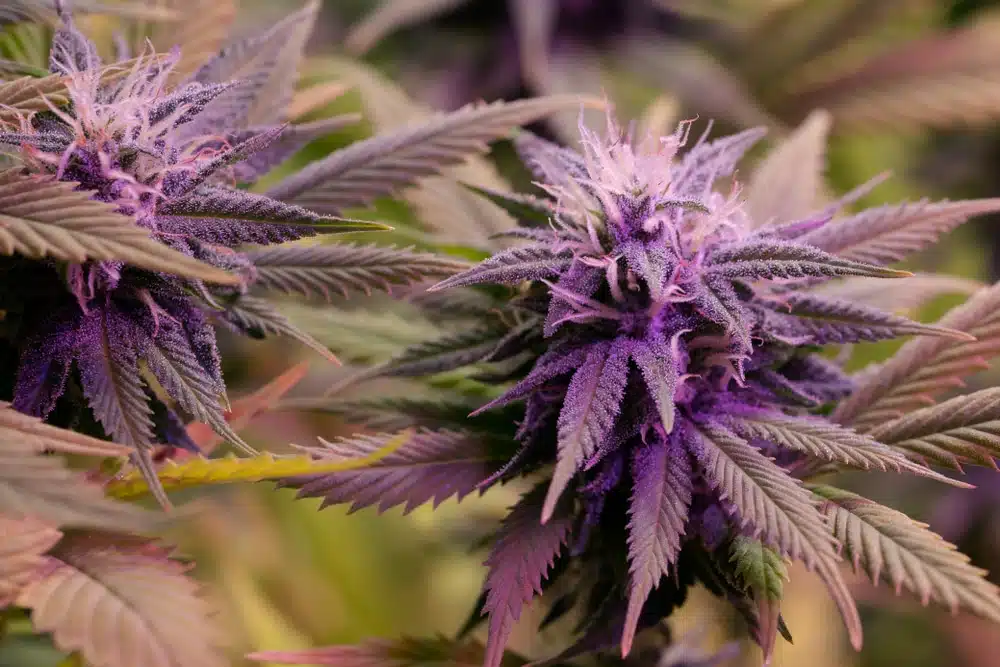
- Macro shot of purple cannabis flowers
The growing environment is an essential aspect of producing healthy purple weed.
Start with the basics of cannabis cultivation. The plants need hot and moderately humid spaces with ample light and a light breeze. They should get appropriate water and nutrients and remain protected from pests and pathogens.
When it comes to growing purple weed, you should also consider specifics. But first, let’s help you pick a setup.
Indoor vs. outdoor growing
Indoor and outdoor growing can be effective for raising purple marijuana. Pick according to preference but keep the advantages and challenges of both setups in mind.
Indoor cultivation gives you complete control over the environment, which is especially handy for producing purple buds. You can manipulate the temperature, light, and nutrients to optimize anthocyanin production.
Outdoor cultivation provides plenty of space and sunlight exposure to your plants. It’s cost-effective, conducive to bountiful harvests, and all-natural, but leaves anthocyanin expression to chance.
Choosing the right soil and nutrients
Proper soil and nutrients house the roots and supercharge development. Learning how to grow purple weed also entails slightly tweaking the feeding.
Pick quality soil with good drainage and aeration. Consider mixes with coco coir, perlite, and compost for added nutrition. Ensure the medium has 6.0–7.0 pH for optimal nutrient uptake.
Choose a nutrient solution devised for cannabis and those appropriate for each growth stage. Look for organic blends with micro and macronutrients and follow the manufacturer’s instructions on feeding dose and frequency.
Phosphorus, potassium, calcium, magnesium, and silica may promote purple coloration. Supplement them through organic means in the flowering stage to avoid nutrient burn or lockout.
Lighting and temperature considerations
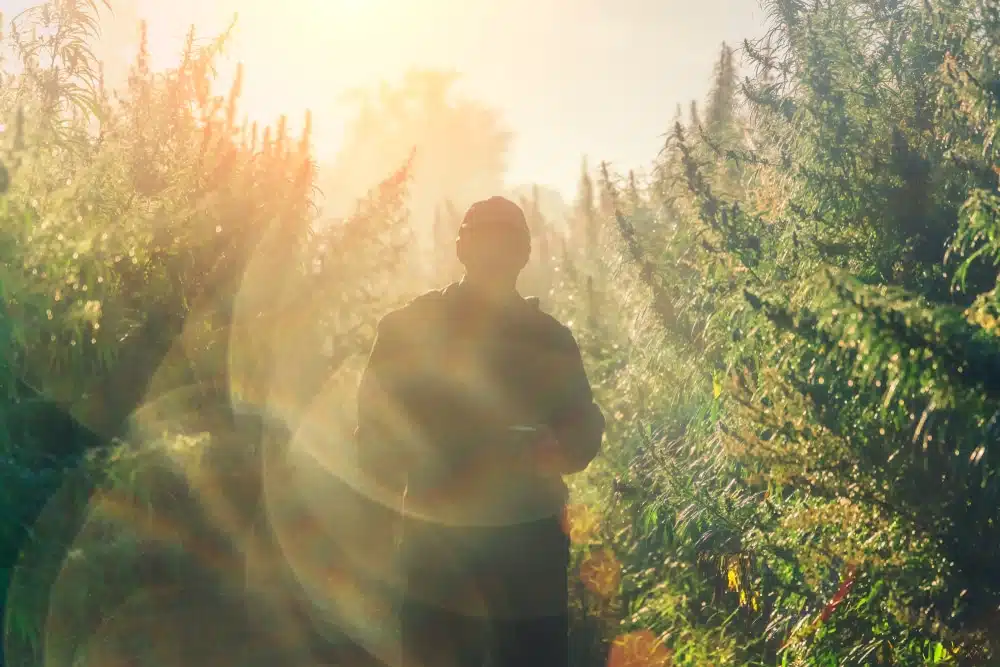
- Large outdoor cannabis grow in the sunlight
Learning how to grow purple weed means playing with temperature and lighting conditions.
Use intense grow lamps indoors, like LED or HPS, and place them at an appropriate distance from plants to prevent bleaching. Consider blue or UV light spectrums in the final weeks of flowering since they may promote purple pigmentation.
Marijuana prefers a 70–85°F temperature range during the daytime and 10°F less at night. Lower nighttime conditions (50–59°F) in late flowering can bring out its purple shade. We call this approach “cold shock.”
Techniques to encourage purple coloration
You have the theory, so let’s discuss ways to apply it. Below are the three key tips for growing purple weed.
Manipulating temperature during the flowering stage
The ideal nighttime temperature range for cold shock is between 50–59°F. It’s best to introduce it during the final weeks of the flowering stage.
Reduce the daytime temperature to 10°F higher than nighttime. Subjecting your plants to extreme temperature fluctuations is a recipe for health issues.
Monitor the temperature during the cooling period to ensure it remains optimal. Watch your plants for wilting and discoloration, and make the room warmer if these symptoms occur.
Selecting strains with high anthocyanin content
Pick strains with high anthocyanin content to increase your chances of growing purple weed. With the diversity of modern cultivars, you can get them high-THC, high-CBD, indica, sativa, sweet, or sour.
Look for strains that produce red, blue, or purple hues, as they indicate a propensity for anthocyanins. They usually have “purple,” “violet,” or “lavender” in the name. Cultivars with berry and grape flavors and purple parents are also often rich in this pigment.
The importance of proper pH levels
Marijuana prefers acidic conditions. The optimal pH range is 6.0–7.0 in soil and 5.5–6.5 in hydroponics. Check the acidity with each feeding and correct it using a pH-Up or pH-Down product as needed.
If you’re willing to experiment, keep the pH slightly lower for purple pistils on weed and vibrant coloration. Anthocyanins accumulate the most in acidic conditions, so aim for 6.0–6.5 in soil and 5.5–6.0 in hydro.
Caring for your purple weed plants
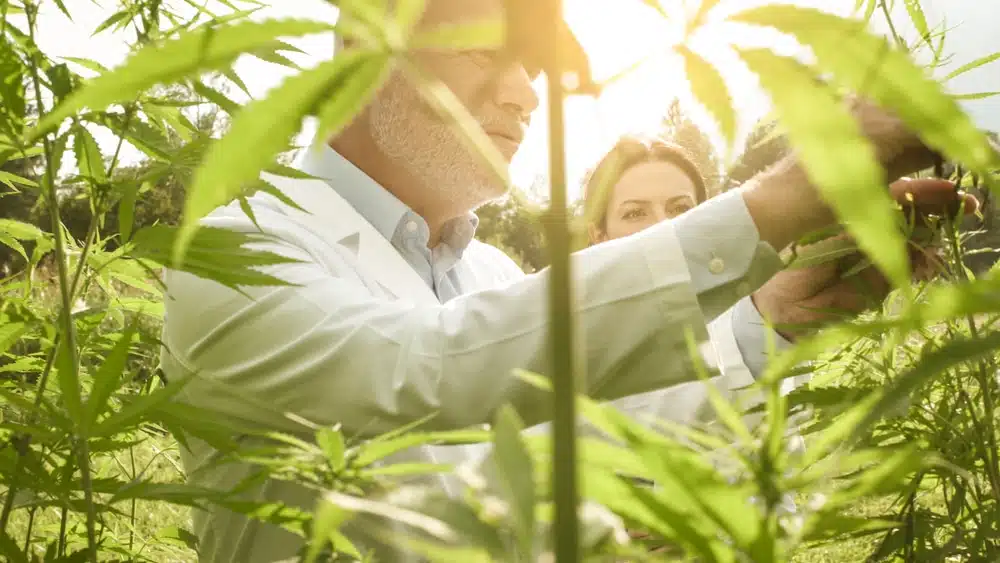
- Grower tending to cannabis plants
Knowing how to grow purple weed isn’t enough: the shade doesn’t matter on unhealthy plants. So, let’s talk about gardening practices for optimal harvest quantity and quality.
Watering and feeding guidelines
Watering and feeding your weed fuels its growth and bud production. The plants lose potency, flavor, and color when water and nutrients are too abundant or scarce.
Water plants when the top inch of the soil feels dry using a pH-balanced moisture source. Thoroughly saturate the medium until you see 20% runoff at the tray.
Supply the appropriate fertilizer for the life stage: nitrogen in vegging and potassium and phosphorus in flowering. Enrich your medium with organic matter for extra nutrition. For growing purple weed, prioritize those with plenty of silica, calcium, and magnesium.
Pruning and training techniques
Pruning and training improve plant structure, health, and harvest potential. They also increase light exposure to the bud sites, helping it develop richer pigment. Helpful techniques include:
- Pruning (defoliation): Removing large or yellowing leaves to improve airflow. It helps direct energy to productive plant sections and prevent mold.
- Topping: Cutting off the top of the main stem to encourage lateral growth and multiple colas. It’s best when the plant is 3–5 weeks old.
- Low-stress training (LST): Bending and tying branches to coax them into a desired shape. Start LST early and be gentle.
Monitoring and managing pests and diseases
While anthocyanin-rich strains have some natural resistance, they’re not immune to pests and diseases. So, preventative measures are the way to go.
Regularly inspect the foliage and soil and keep the garden clean. Use organic pest control methods like neem oil, insecticidal soaps, companion plants, and beneficial insects for added protection.
If you encounter pests or diseases, act quickly to prevent irreversible damage. Diagnose the issue and choose an effective, non-invasive treatment, like organic pesticides, fungicides, or biocontrol agents.
Harvesting and curing your purple weed
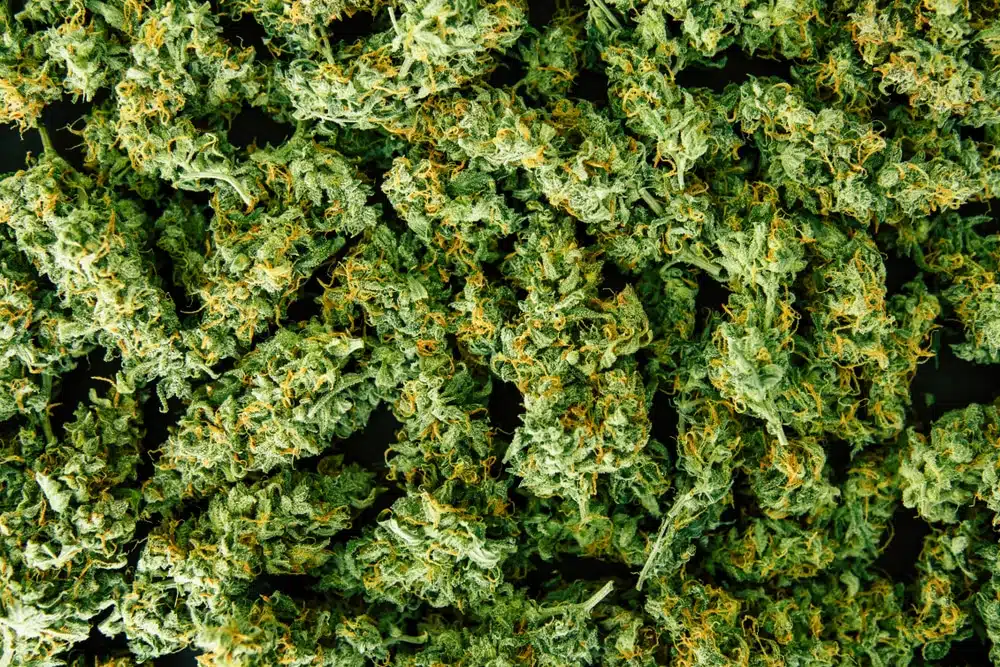
- Harvested and trimmed cannabis buds ready to be cured
You now see purple pistils on weed, and your plants are nearing ripeness. Getting the harvest right lets you reap the fruits of your labor at their most striking.
Identifying the right time to harvest
The fall approaches, and you’ve finished growing purple weed. Nail the harvest moment to get your buds at peak flavor, potency, and color.
Examine the pistils and trichomes to determine ripeness. Most trichomes should be cloudy or milky white, with some going amber or brown. The pistils darken and curl inward as they age. Even if purple hues bled onto these sections, they look darker and more concentrated.
Proper drying and curing techniques
Careful drying and curing preserve bud color, aroma, and potency. These post-harvest processes enhance the quality and longevity of your purple pot.
Cut the branches from the plant and remove any excess foliage. Hang them upside down in a cool, dark, dry environment with good air circulation. Let them dry for at least a week.
Once the buds are dry to the touch, trim the sugar leaves and transfer them to airtight mason jars.
During curing, you “burp” the jars by opening them for a few minutes to release excess moisture. Do smoke tests every few weeks and move the buds to long-term storage once satisfied.
Storing your purple weed for optimal potency and flavor
Growing purple weed and proper post-harvest practices paid off, and now you have heaps of beautiful buds. How do you maintain their bag appeal?
Proper storage prevents poor-quality buds in the long term. As a rule, the following conditions keep your weed visually appealing, potent, and flavorful for the longest:
- Mild, consistent temperatures: A temperature range of 59–68°F is optimal for long-term weed storage.
- Moderate, consistent humidity: A relative humidity range of 55–65% is ideal. You can use humidity packs to keep it consistent.
- Minimal light exposure: Light can cause cannabinoids and terpenes to degrade. Use a dark container or a brown paper bag to derail this process.
- Airtight containers: You can preserve potency and flavor by reducing exposure to oxygen. Use a glass jar with a tight-fitting lid or a specialized cannabis container.
Achieving purple perfection
Learning how to make weed grow purple will take your gardening game higher. It’s all about understanding the role of anthocyanins. Choose the right strain, soil, and nutrients, provide the proper lighting and temperature, and store your buds correctly.
Always start with high-quality marijuana seeds and be patient throughout the growing process. With some TLC and attention to detail, you can produce beautiful, vibrant, potent purple buds guaranteed to impress.
So, why not give it a try? Browse The Seed Fair, buy weed seeds from anthocyanin-prone strains, and get growing.

